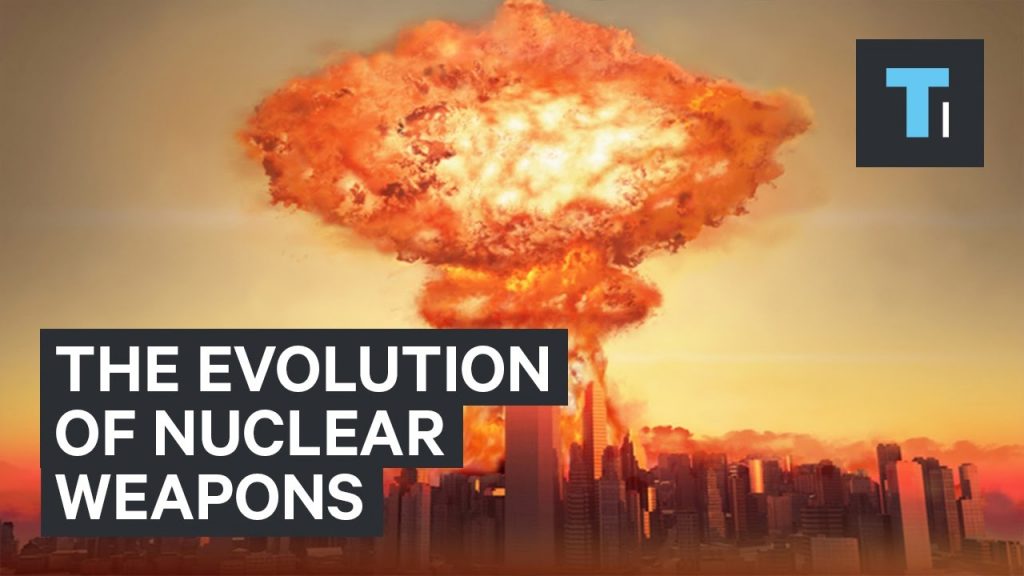
US Installs New Nukes in Europe:
Each as Destructive as 83 Hiroshima Bombs
Baher Kamal / Inter Press Service
MADRID (January 20, 2023) — As if the 100 billion dollars that the United States has so far provided to Ukraine in both weapons and aid were not enough, the US has now started to install in Europe its brand new, more destructive nuclear warheads.
The US 100 billion dollars are to be added to all the weapons and aid that 40 Washington’s ‘allies’ — Europe in particular — have been sending to Ukraine since it was invaded by Russia in February 2022.The US spending on the Ukrainian war in less than a year amounts to the desperately needed funding that the United Nations require to partially alleviate some of the horrifying suffering of over one billion human beings over two long years.
In a further escalation, the United States began in December 2022 to ship new nuclear warheads to Europe: “the B61-12 warhead is a more advanced warhead from the ones currently deployed in Belgium, Germany, Italy, the Netherlands and Turkey,” according to the International Campaign to Abolish Nuclear Weapons (ICAN).
Boeing designed the bomb’s new guided-tail kit, giving it additional manoeuvrability and the appearance of more precision. But, it’s a nuclear weapon, and has different yields, from 0.3kt to 50kt, ICAN reports.
Much More Destructive
“These bombs can detonate beneath the Earth’s surface, increasing their destructiveness against underground targets to the equivalent of a surface-burst weapon with a yield of 1,250 kilotons –– the equivalent of 83 Hiroshima bombs.”
Even if the bombs are American and the US retains launch authority, they would most likely be dropped by Europeans. If the US decides to use its nuclear weapons located in Germany, the warheads are loaded onto German planes and a German pilot drops them, ICAN further explains.
This Geneva-based coalition of 652 non-governmental partner organisations in 107 countries, promoting adherence to and implementation of the UN Treaty on the Prohibition of Nuclear Weapons, received the 2017 Nobel Peace Prize.
The “Brutal Struggle for Power”
The production, testing, and use of nukes is one of the reasons why the biggest powers are now pushing the world into the abyss of lawlessness. In fact, the UN chief has once more sounded the alarm bell.
“From illegally developing nuclear weapons to non-sanctioned use of force, States continue to flout international law with impunity”, said the UN Secretary-General, António Guterres.
The rule of law stands between peace and ‘brutal struggle for power,’ he warned in his 12 January message to the UN Security Council – where five countries: US, Russia, China, UK and France– hold a self attributed authority to override the well of over 190 states, members of the UN.
“Grave Risk” of Lawlessness
The UN chief painted a grim picture of civilians around the world suffering from devastating conflicts, rising poverty, and surging hunger, warning that “we are at grave risk of the Rule of Lawlessness”.
The rule of law “protects the vulnerable; prevents discrimination; bolsters trust in institutions; supports inclusive economies and societies; and is the first line of defence against atrocity crimes.”
Guterres cited Russia’s invasion of Ukraine; unlawful killings of both Palestinians and Israelis; gender-based apartheid in Afghanistan; the Democratic People’s Republic of Korea’s unlawful nuclear weapons programme; violence and severe human rights violations in Myanmar; and a deep institutional crisis in Haiti.
Meanwhile…
Meanwhile, the world is falling apart, witnessing an “ongoing collision of crises for which traditional response and recovery are not enough,” warns the UN Development Programme (UNDP).
“Our future is at stake, as wars, epidemics, the climate emergency and economic upheaval leave almost no country untouched.
From the war in Ukraine that sparked a global cost of living crisis to the climate emergency, the floods in Pakistan, the global pandemic, hunger in the Horn of Africa, to the crisis in Yemen — we face never before seen challenges to our future, adds UNDP.
Developing economies accounting for more than half of the world’s poorest people need urgent debt relief as a result of “cascading global crises. Without action, poverty will spiral and desperately needed investments in climate adaptation and mitigation will not happen.”
Also meanwhile, millions of children
suffer under armed conflicts
The UN Children Fund (UNICEF) reports that more than 400 million children live in areas under conflict; an estimated 1 billion children — nearly half the world’s children — live in countries at extreme vulnerability to the impacts of climate change…
… And at least 36.5 million children have been displaced from their homes; and 8 million children under age 5 across 15 crisis-hit countries are at risk of death from severe wasting.
Today, there are more children in need of humanitarian assistance than at any other time since the Second World War. Across the globe, “children are facing a historic confluence of crises — from conflict and displacement to infectious disease outbreaks and soaring rates of malnutrition.”
UNICEF has appealed for 10.3 billion US dollars to reach more than 110 million children with humanitarian assistance across 155 countries and territories.
© Inter Press Service (2023) — All Rights Reserved
“…the bomb has a maximum yield of 50 kilotons. However, this yield can be lowered as needed for any particular mission. In fact, the bomb’s explosive force can be reduced electronically through a dial-a-yield system.”
What Are B61-12 Gravity Bombs?
Russia Says US ‘Lowering Nuclear Threshold’
(October 29, 2022) — NATO bases in Europe are set to receive upgraded B61-12 air-dropped gravity bombs in December, US officials told NATOallies during a closed-door meeting in Brussels this month.
According to Politico, this is months ahead of the original schedule that would have seen the weapons delivered next spring.
Russia reacted by saying that Moscow will take the move into account in its military planning, with Russian Deputy Foreign Minister Alexander Grushko announcing that the decision to accelerate the deployment of the upgraded bomb lowers the “nuclear threshold.”
“We cannot ignore the plans to modernize nuclear weapons, those free-fall bombs that are in Europe,” Grushko told state RIA news agency.
“The United States is modernizing them, increasing their accuracy and reducing the power of the nuclear charge, that is, they turn these weapons into ‘battlefield weapons’, thereby reducing the nuclear threshold,” Grushko added.
The B61-12 is a modernized version of the B61, a family of thermonuclear gravity bombs that has been part of the US military stockpile since 1968. The upgrading of the gravity bomb has been in the works for many years now, and the project has been described as the most expensive nuclear bomb project ever.
The 12-foot B61-12 bomb carries a 50 kilotons warhead — the equivalent of 50,000 tons of TNT — and is extremely precise, thanks to a controlled tail rudder which also allows for the removal of its parachute. Because of this tool, pilots do not have to fly exactly over targets to drop the bomb.
Military magazine The National Interest has described the B61-12 as “the most dangerous nuclear weapon in America’s arsenal” for its versatility rather than for its nuclear yield, which is lower than others. The B83 nuclear bomb, by comparison, has a maximum yield of 1.2 megatons, or 1,200 kilotons.
The combination of accuracy and low-yield that characterizes the B61-12 gravity bomb is what makes it the most usable nuclear bomb in America’s arsenal, the magazine said, adding that “accuracy is the most important determinate of a nuclear weapon’s lethality.”
Pentagon spokesman Brig. Gen. Patrick Ryder told Politico that the accelerated deployment of the B61-12 gravity bomb “is in no way linked to current events in Ukraine and was not sped up in any way,” but the move comes at a time of heightened tensions over Russia’s nuclear threats, and it brings its own risk of escalating a situation already under strain.
.jpg)
At the moment, the US has some 200 deployed working tactical nuclear weapons, according to Reuters, half of which are deployed in allies’ bases in Belgium, Italy, Germany, the Netherlands and Turkey. Russia, on the other hand, is estimated to have around 2,000 such weapons.
According to the Federation of American Scientists (FAS), Russia and the US currently own approximately 90 percent of all nuclear warheads, with each having around 4,000 warheads in their military stockpiles.
Newsweek has contacted the US Department of Defense and Russia’s defense ministry for comment.
Posted in accordance with Title 17, Section 107, US Code, for noncommercial, educational purposes.



